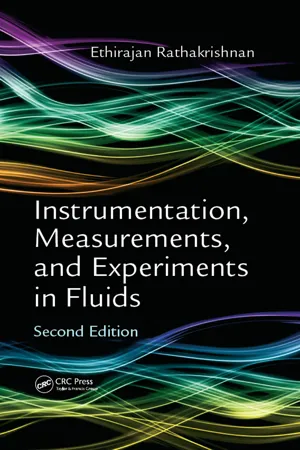
Instrumentation, Measurements, and Experiments in Fluids, Second Edition
- 586 pages
- English
- ePUB (mobile friendly)
- Available on iOS & Android
Instrumentation, Measurements, and Experiments in Fluids, Second Edition
About This Book
Instrumentation, Measurements, and Experiments in Fluids, Second Edition is primarily focused on essentials required for experimentation in fluids, explaining basic principles, and addressing the tools and methods needed for advanced experimentation. It also provides insight into the vital topics and issues associated with the devices and instruments used for fluid mechanics and gas dynamics experiments. The second edition adds exercise problems with answers, along with PIV systems of flow visualization, water flow channel for flow visualization, and pictures with Schlieren and shadowgraph—from which possible quantitative information can be extracted. Ancillary materials include detailed solutions manual and lecture slides for the instructors.
Frequently asked questions
Information
Chapter 1
Needs and Objectives of Experimental Study
1.1 Introduction
1.2 Some Fluid Mechanics Measurements
1.2.1 Wind Tunnel Studies
(1.1) |
1.2.2 Analogue Methods
1.2.3 Flow Visualization
1.3 Measurement Systems
1.3.1 Sensing Element
Table of contents
- Cover
- Half Title
- Title Page
- Copyright Page
- Dedication
- Table of Contents
- Preface
- About the Book
- About the Author
- 1 Needs and Objectives of Experimental Study
- 2 Fundamentals of Fluid Mechanics
- 3 Wind Tunnels
- 4 Flow Visualization
- 5 Hot-Wire Anemometry
- 6 Analogue Methods
- 7 Pressure Measurement Techniques
- 8 Velocity Measurements
- 9 Temperature Measurement
- 10 Measurement of Wall Shear Stress
- 11 Mass and Volume Flow Measurements
- 12 Special Flows
- 13 Data Acquisition and Processing
- 14 Uncertainty Analysis
- References
- Index